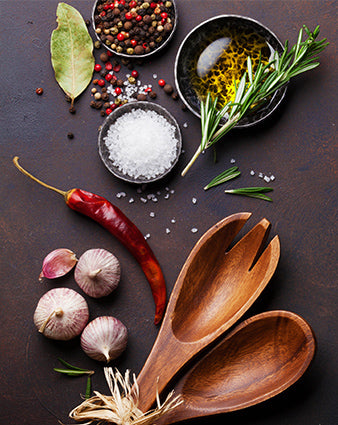From Farm-to-Fork: The Tasty Process of Growing Tamarind 🌳
Hello, taste explorers and flavour fanatics! Today, we’re embarking on a tangy trek through the tantalizing world of tamarind – from its humble roots on the farm to its star turn on your fork. Ready to discover the sweet and sour magic of this tropical delight? Let’s dive in!
Step 1: Tropical Origins - The Tamarind Grove 🌱
Our tamarind adventure begins in the lush, tropical regions where tamarind trees thrive. Picture a serene landscape with tall, majestic trees swaying in the warm breeze...
From India to Africa and beyond, tamarind trees dot the landscape, their feathery leaves providing a dappled canopy of green.
These hardy trees are well-suited to hot climates and can reach heights of up to 80 feet!
Step 2: Bloom and Grow 🌼
Tamarind trees are slow growers, but their patience pays off...
In the spring, clusters of small, yellow flowers with red streaks bloom, adding a splash of colour to the green foliage. As the flowers fade, the real magic happens – the formation of tamarind pods.
These pods, ranging from 3 to 8 inches in length, gradually mature over 6 to 9 months, turning from green to a rich, brown hue as they ripen.
Step 3: Harvesting the Tang 🚜
When the tamarind pods are plump and their shells have turned brown and brittle, it’s time for the harvest.
Farmers carefully pluck the ripe pods from the branches, collecting baskets full of this tangy treasure.
The harvest season is a time of excitement and hard work, as each pod holds the promise of flavour-packed goodness.
Step 4: Shelling and Processing
Once harvested, the tamarind pods are brought to processing facilities where the outer shells are removed to reveal the sticky, dark brown pulp inside.
This pulp is the heart of the tamarind – the part that brings that irresistible tang to your taste buds.
The pulp is then separated from the seeds and fibres, often pressed into blocks or made into concentrate for culinary use.
Step 5: Journey to the Kitchen
Now that the tamarind is processed and packaged, it’s ready to make its way to kitchens around the world.
Tamarind can be found in various forms – as a paste, concentrate, or even dried and ground into powder.
Its versatility makes it a favourite in a wide array of cuisines, from Indian and Thai to Mexican and Caribbean.
Step 6: Culinary Creativity - Cooking with Tamarind 🍛
The real fun begins when tamarind hits the kitchen! Its unique sweet and sour profile adds a zesty kick to countless dishes.
Imagine a rich, tangy tamarind chutney accompanying your samosas or a spicy, sour tamarind soup warming your soul.
Tamarind is also the secret ingredient in many sauces and marinades, adding depth and complexity to everything from barbecue ribs to pad Thai.
Step 7: The Final Taste - From Fork to Flavour 🍴
At last, our tamarind journey reaches its delicious conclusion on your plate. As you savour each bite, you’re not just tasting a dish – you’re experiencing the culmination of a journey that began in a tropical grove and travelled through meticulous harvesting and processing to reach your fork.
Each mouthful is a celebration of the bold, vibrant flavours that tamarind brings to the table.
So, the next time you enjoy a tangy tamarind treat, take a moment to appreciate the journey it took to get there. From the tropical groves where tamarind grows to the skilled hands that harvest and prepare it, every bite is a testament to the incredible journey of this unique fruit.
Here’s to tamarind – nature’s tangy treasure!







